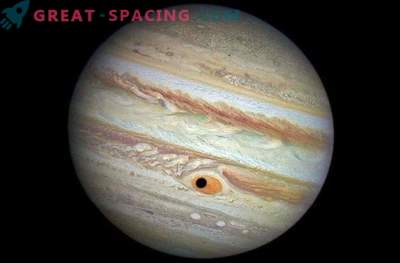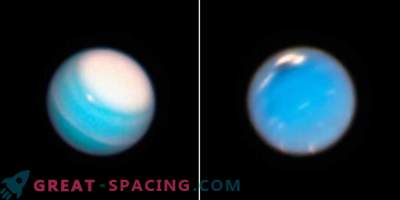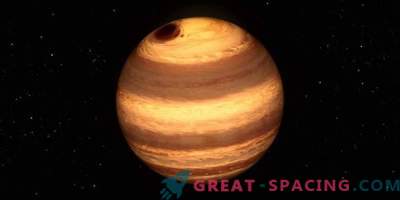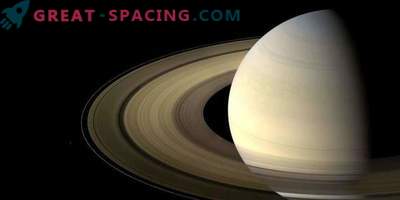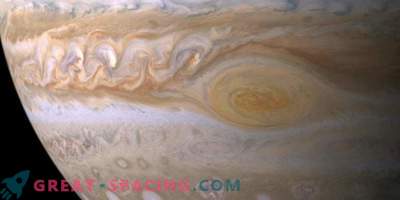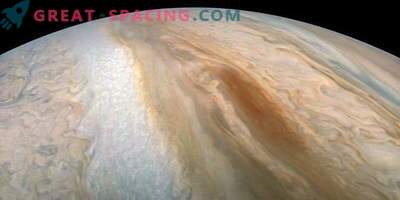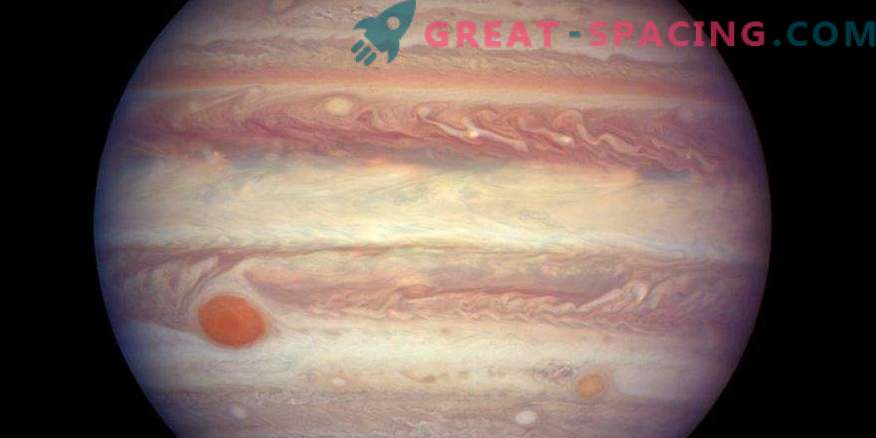
The picture was taken at a time when the planet was located 670 million kilometers from us. The Hubble telescope demonstrates the complex beauty of Jupiter in detail. The bands are created by air flowing in different directions at different latitudes. Bright areas - zones with high pressure, and dark (belt) - low. At the points of their interaction storms arise. The Great Red Spot is a long lasting storm. Smaller storms appear as white and brown ovals. They “live” only a few hours or centuries.
In April 2017, Jupiter went into opposition: it came as close as possible to Earth and its “facial” hemisphere was completely illuminated by sunlight. The Hubble telescope used the moment to take a snapshot of the largest planet of our system. Together with past images, scientists can trace the giant's atmospheric changes.
On April 7, Jupiter joins the opposition. This is the point where Sun, Earth and Jupiter line up in one line (the Earth between them). The same time coincides with the maximum approach to the planet - 670 million km. Therefore, the giant becomes brighter and reveals more details. On April 3, Hubble used Wide Field Camera 3 to shoot Jupiter in ultraviolet and infrared light. Inspection of the object allowed to cover up to 130 km wide. The surface is divided into several distinct bands stretching parallel to the equatorial line. The level of transparency of the clouds differs in the amount of frozen ammonia (in light more than in dark). Different concentrations contain different winds, developing speeds up to 650 km / h. The most recognizable area is the giant storm, which is called the Big Red Spot. And its dimensions allow us to accommodate our planet. But this image confirms that the storm (lasts for 150 years) continues to decrease. Nobody knows about the reason yet.
Next to him there is a small version of the storm in more southern latitudes. Because of the similarity, it was called Junior Red Spot.
The program Outer Planets Atmospheres Legacy (the study of external planets) was launched in 2014 and started with Uranus. Since 2015, the goal has shifted to Jupiter and Neptune. Saturn expects its turn in 2018.
